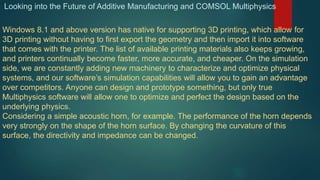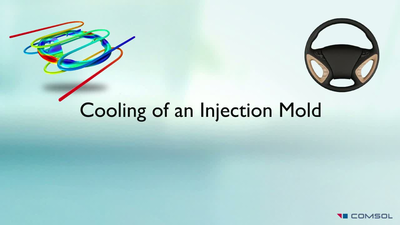

Among other uses, a 2D model can be used to gain understanding of the model concept or to fine-tune parameters, such as solver settings, used in the 3D model. In a later blog post, I will show such an example where a geometry cannot be adequately modeled in 2D, but where doing this will still significantly reduce your workflow time. How does this feature help in these situations? However, there are many 3D CAD model files where symmetry does not exist, and all the details in 3D need to be considered for an accurate model. The above example shows a geometry that could be simplified due to its symmetric properties. This is the perfect complement to a computation-heavy model with long solution times. Now, from the Work plane drop-down menu, select the Work Plane with the appropriate cross section node in it.īuild the geometry, and now you have a simpler model with comparable solutions. Add a Cross Section feature to the Geometry node of the 2D model. Once you’ve established a suitable Work Plane to intersect with, add a 2D model from the root node, with similar physics and study type as its 3D counterpart. Simplify to Understand and PerfectĬreating 2D models from 3D geometries is a simple process. Yet, if the simulation had included other physics, such as heat transfer, or required nonlinearities with greater complexity, it would have taken longer to solve. The same model done in 3D produces the same results as the solution presented with the revolved postprocessing of the 2D axisymmetric model. Revolution of the 2D axisymmetric Non-Newtonian Flow model from above using the postprocessing features included in COMSOL Multiphysics. If the simulation included other physics, like heat transfer, or required nonlinearities with greater complexity, it would have taken a bit longer to solve. The simulation was of Non-Newtonian Flow, and it took 3-4 seconds to solve. We hope that you will take advantage of this valuable new functionality as you develop your simulations.Ī 2D model was created by taking a 2D work plane from the middle axis to the edge of the 3D geometry, as the original 3D geometry was symmetrical around the axis. You can create 2D cross sections from any 3D model, whether that model was created in 2D originally, created in 3D and imported into COMSOL, or synchronized using the LiveLink™ products.

Even with only moderately complex CAD models, this feature can really improve workflow. This feature is able to simplify the geometry without diminishing its integrity, as seen in the images below.

Therefore, we have added a feature for creating 2D models from the cross sections of 3D geometries in COMSOL Multiphysics 4.3b. This leaves us with two possible solutions: inventing more powerful computers (if we could, we would), or simplifying the models.

Should users have to rely on assumptions about the physics they are simulating just to keep projects within a manageable scope? The computers available are simply not fast enough for some extremely complex simulations. This leads to a significant conundrum because changing the model slightly means re-solving, and for computation-heavy models this can be a time-consuming process. Often, your geometries are available as 3D CAD model files and are invariably computation-heavy when simulating a variety of coupled physics. This easy-to-use feature allows engineers to simplify the model, gain understanding of and fine-tune parameters, and dramatically reduce simulation time. One addition to the COMSOL Multiphysics base package we don’t want you to miss is the ability to create 2D models from cross sections of 3D geometries. Our newest release, COMSOL Multiphysics version 4.3b, contains so many new modules and features, certain additions might get lost in the fray.


 0 kommentar(er)
0 kommentar(er)
